|
I saw this guy slithering across the bike path in Warren RI a couple of months ago. I don't know much about snails, but I thought he (or she) was really cool looking. The top two tentacles have eyes at the tips. I think she might be a Grovesnail (cepaea nemoralis).
5 Comments
Most rowers know that sculling is what you do with a pair of sculls (oars), one in each hand, but sculling also means rowing using one oar off the transom, as shown in this video. I shot this video in Mystic, CT. while sculling my rowboat (I won't call it a scull) using my feet. The rowboat in the video is a Swampscott Dory, which can also be sailed. By the way, we will be displaying at the WoodenBoat Show in Mystic June 24-26, 2016.
Scull is a weird word with so many meanings that it's almost meaningless. But in the nautical sense it can mean: a method of rowing, a boat for rowing, or an oar. Or a different method of rowing. Most of us have heard the statement, "You can scull your scull with a pair of sculls." or something like that. Well, I would add to it: "or a single scull." When we went to set up for the WoodenBoat Show in Mystic, CT this year, we were surprised to see a 115 foot long 95 ton Viking ship tied up right behind our display site. We were used to seeing whaling ships and all manner of wooden pleasure yachts, but nothing like this. It looked a lot like an ancient ship I had seen in a museum in Norway, only bigger. After talking to crew members and taking a deck tour, I got the story behind it. The Drakon Harald Harfagre is a reproduction of a Viking warship based on archaeological evidence and Norse literature. It was built in Norway and launched in 2012. It has 50 oars and one big sail. In 2016 it made the crossing across the North Atlantic to America under sail. From Norway they traveled to the Shetland Islands, the Faeroe Islands, Iceland and Greenland. Then on to Newfoundland, Canada, then up the St. Lawrence River and through all the Great Lakes as far as Duluth (Lake Superior) and Chicago (Lake Michigan), then back to the East Coast via the New York Canals and New York City. You can see some very interesting video of the ship under way on Youtube and on their Facebook page. The ship is now on display at the Mystic Seaport and will be there until at least this fall (2017). Plans after that are not finalized, but it will probably sail down the East Coast.
Retrofitting your CanoeWhat is the best rowboat for exercise?
This is a question I get asked a lot at boat shows. People are becoming more aware of exercise and want to be active while they are outdoors and on the water. They already know that rowing is good exercise, but what they want to know is what kind of rowboat is the best for getting that exercise and why. Most people who are thinking about rowing a boat for exercise are not thinking about grunting and sweating like you might do in a gym. What they are thinking about is a pleasant outing on the water while exercising their cardiovascular system and burning off a few hundred calories as a byproduct of enjoying themselves. They are right to think that rowing can be enjoyable, and the boat they use can make a big difference. Keeping in mind the enjoyment of the outing as well as the quality of the exercise, here is my answer: For most people, the best rowboat for exercise rowing is an ordinary canoe. More specifically, a tandem recreational or touring type canoe set up with a rowing system. And the best rowing system to use in that canoe is the FrontRowrer™ (which I just happen to make). Canoes make excellent rowing boats. See Retrofitting Your Canoe. Well-designed tandem canoes have evolved into the perfect size and shape for two paddlers cruising comfortably for long periods. The propulsive power of a single oarsman is about the same as that of two paddlers, so it follows that this size and shape would work well for a single oarsman. Such a canoe has good stability, maneuvers easily, and moves efficiently over a broad range of speeds. And the open design with no decking makes it easy to store cameras, fishing gear, snacks, extra clothing, etc. within easy reach. Here are some important qualities that make a good exercise rowboat:
A good canoe set up for rowing does all of the above. And they are typically produced in large enough quantities to keep the costs down. And you may already own one. Some people may be disappointed with the idea of rowing a canoe for exercise. It is a common misconception that you need a fast boat to get good exercise, and canoes are not as fast as shells. But the reality is that you can get the same (or even better) quality exercise at a slower pace with the higher resistance of a canoe. With a faster boat you may move through the water faster, but you will have a higher stroke rate with less resistance. You can burn the same amount of calories and work your heart and lungs at the same level using a lower stroke rate with higher resistance. And you may find the slower pace more enjoyable. By the way, a good touring canoe set up for rowing is not “slow”. It will be faster than almost any other type of rowboat except a shell. What's wrong with "conventional" types of rowing boats? There's nothing wrong with conventional rowing boats, as long as they are used for what they were designed for. Most rowboats fall into one of two categories: (1) traditional working-type rowboats, or (2) racing-style shells. Traditional working-type boats:
Racing-style shells:
Solo rowing Solo rowing is when you have just one person in the boat using a pair of oars. This is also known as sculling. When your canoe is set up for solo rowing, the oarsman sits down low and in the middle of the boat. This increases the stability and seaworthiness of the canoe. You can generate more power with a pair of oars, and it is better exercise. Rowing makes it easy to go straight ahead, because you apply power equally on both sides. The oar blades are farther out from the sides, making it easier to turn. And with two oars in the water you can stroke forward on one side and backward on the other and spin the boat around. Solo rowing in a canoe feels kind of like driving a sports car. With only one person in the canoe it will accelerate and stop more quickly. And it will "turn on a dime". Rowing with a passenger A tandem canoe is designed to carry two people. This means that you can bring a passenger (and some gear like cameras and fishing tackle) along. An experienced solo rower can easily handle a canoe with a passenger. You will have increased resistance and a slower pace than with solo rowing, so you will get the same amount of exercise in a shorter distance. It’s fun to have companionship while you’re out getting your exercise. One of you can row to your destination and the other can row back, so you both can get a good workout. And having a friend to help makes it easy to load your canoe on your car top or trailer. For rowing with a passenger, you set your canoe up with the oarsman aft of the center line with the passenger positioned forward so that the canoe is trimmed properly in the water. If your canoe is set up right, you can easily switch from rowing solo to rowing with a passenger. Choosing a canoe Almost any tandem recreation canoe will work well for rowing, but some will work better than others. Guidelines for choosing specific canoes for rowing can be found here: canoes for rowing Hi Ron,
The boat handles great. I was surprised at how little effort it requires with the frontrower to get it moving along. The seat is very comfortable. Despite the 42″ beam I did not have any issues. It is set up for conventional rowing as well. I wanted that for when I take a passenger out for a short trip so that they could occupy the rear seat and I could row from the forward position. I did not put risers under the front row lock sockets as this might have caused interference with the frontrower. I will be taking my wife and daughter out in it. My 2 dogs will be going as well as soon as I clip their nails! Lynda and I just got done putting the name on the transom in gold leaf. I named at after my daughter, Paige. Feel free to use the picture. If you need any more just let me know. Mark A new rowboat showed up on the Warren, Rhode Island waterfront this winter. It’s a 6-oared Cornish gig built in Warren by Don Betts and friends. This is the third gig in the casual community of rowboats currently plying the Warren River. The other two gigs are 4-oared Whitehalls, which were brought here from New York City two years ago.
The Cornish gig is 31 feet long and has it’s roots in the Scilly Isalnds, Cornwall, England, where they were used as pilot boats. It has 6 rowers and a steersperson. The Whitehalls are 27 feet long and have their roots in New York City where boats of this type were originally built at the foot of Whitehall Street. They have 4 rowers and a steersperson. Don and friends row their gigs several time a week, and invite others to join them. They are a casual group, so if you want to join them, just show up on the Warren town dock (at the foot of State Street) at 4:00PM on Tuesdays. The group has some planned excursions on the weekends, including racing the Cornish gig, named Cady (after local marine artist Henry Newel Cady). The mostly female racing team they have put together is called the Whirligigs. They entered their first race, The Snow Row in Hull, MA on March 6, 2010. This was also the maiden voyage for the Cady, and they turned in a very respectable time of 39:52 for 3rd place in the 3 3/4 mile race. Not too shabby for the first time out. The Warren River has always been one of our favorite places to row, and was one of the reasons I located my business here. The river is visually interesting because it has a working waterfront on the Warren side and some beautiful residences on the Barrington side. The town wharf is only about 1/2 mile up the Warren River from Narragansett Bay. Out in the Bay, Hog Island and Prudence Island are within easy rowing distance. The river is tidal and reverses its flow four times a day, which keeps things interesting. Sometimes it’s dead calm and other times it’s flowing at 2 or 3 miles an hour in one direction or the other. Farther upstream you have the Barrington Yacht Club, with hundreds of moored boats which can be surrealistic to row through, especially on a calm night. There are several bridges to row under, and that can really be fun when the tide is running fast. However, I should warn that this can be dangerous if you don’t know what you’re doing. Another thing that makes the Warren River interesting is that there are several restaurants that you can row to for breakfast, lunch or dinner. One of our favorite outings is to row up to Tyler Point (restaurant) for dinner out on the porch and then row back after dark. We used to bring our golden retriever Zak along and he was allowed on the porch. We had to cover his ears with our hands at sunset when the yacht club shot off their cannon. We miss Zak, (he passed away 2 years ago at the ripe old age of 17 1/2). We took him everywhere with us, and only went to restaurants that would allow him, which usually meant eating outdoors. We have come to prefer dining outdoors in nice weather, and sometimes feel sorry for those who are inside. Thank you, Zak. Another favorite outing involves rowing up river to the bike path just past the first bridge, where we beach the boats and walk along the path about a mile to Starbucks for coffee. This stretch of bike path is completely shaded with trees, so its really nice on a hot day. We are really happy to see other rowers enjoying the river. For many years we were the only human powered boaters we saw out there. I guess the tides and afternoon winds discourage most canoe and kayak paddlers. But with rowing you have much more power and control, and winds and tides are not that much of an issue. The rear facing direction of conventional rowing makes navigating the Warren River difficult, but the multi-oared gigs always have a steersman who faces forward so it is not a problem for them. There are at least 26 gigs in use in New England. Plus there are whale boats and other seaworthy multi-oared boats around. Rowing them all is increasing in popularity. For more information you can contact Don Betts [email protected]. In the year 1878, there was great rivalry between the New England coastal cities of Portland and Boston. In those days, the best rowers raced for prize money. Michael Davis of Portland had already defeated one famous Boston rower, George Faulkner, on the Charles River in front of 30,000 cheering spectators. When a race was arranged between Davis and Boston’s best rower Patrick Reagan, the excitement was comparable to a championship prizefight. A neutral location was needed, and Silver Lake, about thirty miles south of Boston was chosen. A special train was chartered to help transport the rowers and thousands of spectators from Boston to Silver Lake, and it was crammed full with fans from both cities.
The boats they used were the racing shells or "sculls" of the period. Reagan's boat was most likely the typical sliding seat variety, whereas Davis had been experimenting with sliding riggers, which is probably what he was using on that day. The race was 2 miles out to a stake, around the stake, then back to the starting line. Stake races were popular in those days, because the spectators could see both the start and the finish. Davis won by a large margin, and the results were challenged with a claim that Reagan was fouled at the turning stake. Fights broke out, but eventually the bets were paid. Reagan had bet all his family’s assets on the race and was now broke. Sick with exhaustion from the race and with the knowledge that his family lost everything, he was carried back to the train. That evening the train filled with passengers including Reagan headed back to Boston, while Davis stayed behind, celebrating his victory with friends and admirers. An open switch at a sidetrack caused the returning train to derail. Railroad employees on a freight train waiting on the sidetrack saw the accident happen and sped off toward Boston to get help. To get more speed, they unhitched their freight cars. The unhitched cars rolled back down the tracks, smashing into the derailed train, compounding the disaster. Reagan and 18 other passengers were killed, and more than 190 others injured, making it the worst train disaster in New England history. Roger Williams (the Founder of Rhode Island) was an English clergyman who immigrated to Massachusetts Bay Colony in 1631. Five years later he was banished from the Colony for being too liberal and too friendly with the Indians.
He founded Providence, a community based on religious freedom and democratic ideals, outside the boundaries of Massachusetts at the head of Narragansett Bay. Later, he obtained a royal charter for the Colony of Rhode Island. Williams gave up the clergy and ran a trading post. There were no roads or bridges at the time, and he traveled throughout the area on foot and by boat. He mastered the Indian’s language and had friendly relations with them, often mediating in disputes between Indians and Colonists. By 1670, the Quakers were gaining political power in Rhode Island. Although Williams tolerated the Quakers, he had differences with them, and tried to discredit the teachings of their leader, George Fox. On August 8, 1672, in an attempt to debate Fox, Williams rowed himself some thirty miles from Providence to Newport, leaving in the morning and arriving that night before midnight. The debates took place the next day, but Fox was not present. 30 miles in one day would be a challenging row for anyone. What makes this row amazing is that Williams was about 70 years old at the time. He must have been one tough cookie. He said that God helped his old bones row the distance. The prevailing summertime winds in Narragansett Bay are from the south, so he probably had headwinds most of the day. The tides reverse direction every 5 3/4 hours, so he would have had tides running in both directions. Then he rowed for several hours at night, without the aid of lights. The row boat he used was described as a “great canoe” which may have been fitted out with a pair of oars, as was common on ships’ boats of the time. Howard Blackburn was a native of Nova Scotia, Canada. In 1883, at the age of 24, he was a doryman on the schooner Grace L. Fears, sailing out of Gloucester, Massachusetts. The Grace L. Fears had six dories—the two man fishing boats that were lowered over the side of the schooner when the fishing grounds were reached. The dorymen set out their trawls (long lines with about 500 baited hooks, an anchor on one end, and a float at the other), then rowed back to the mother ship to wait for the fish to find the bait and hook themselves.
On January 26, the Grace L. Fears was anchored on Burgeo Bank, a rich fishing grounds about 60 miles south of Newfoundland. Captain Alec Griffin ordered the men to retrieve their trawls early because a storm was brewing. Blackburn and his dory mate, Thomas Welsh, were slow at retrieving their lines. By the time they were done, it was snowing heavily, and they lost sight of the ship. They rowed in the direction of the ship, but were downwind in the howling gale. They anchored their dory and waited for dawn, bailing out the spray and chipping away the ice that froze onto the sides and gunwales to keep the boat from becoming top heavy and capsizing. In the morning, the snow stopped, but the ship was nowhere to be seen. The wind was still blowing so they continued at anchor, bailing and chipping away the ice. While bailing, Blackburn somehow lost his gloves. His hand began to freeze, and knowing that they would soon become useless, he placed them on the oars and let them freeze into curved hooks. The men decided to try to row for the coast of Newfoundland, 60 miles to the north. Blackburn rowed while welsh bailed and chipped the ice. Sometime during the second night, Welsh expired. Blackburn continued rowing without food or water, knowing that to stop would mean death. Blackburn continued rowing through the third day and third night, with his dory mate’s body lying frozen in front of him. On the fourth day the sea was calm and in the afternoon he saw the coast of Newfoundland. He continued rowing. On the fifth day he rowed up a river on the coast and was found by the inhabitants of Little River, Newfoundland. A family there took him in, nursed him and treated his frostbite as best as they could, soaking his wounds in brine solution, then applying poultices of flour and cod liver oil. He lost all his fingers and half of each thumb. He also lost several toes from the ordeal. In 1886, Blackburn found his way back to Gloucester where he was welcomed as a hero. Since he was no longer able to work as a fisherman, sympathetic townspeople helped him raise enough money to open a cigar store, which soon became a successful saloon. Blackburn prospered and paid back the monies given to him many times over. But he was not satisfied being a landlubber. He bought a sloop, The Great Western, which he learned to sail despite his disability. In 1899 Blackburn sailed single handed to England, the trip taking 62 days. In 1901, he made a second solo crossing of the Atlantic, setting a new record of 39 days. The Blackburn Challenge 22 mile rowing race off the coast of Glocouster was named in Blackburn’s honor. Blackburn died in 1932 at the age of 72. Rowing in Finland
Olympic style rowers may consider the Head of the Charles Regatta held in Cambridge Massachusetts to be the world’s largest rowing regatta, with over 7,000 rowers participating. But the Sulkava Rowing Race held in Sulkava Finland is the world’s biggest rowing competition and has over 11,000 rowers participating. The event lasts for three days and includes the Finnish National Championships. This race has become the largest festival in Finland. The days are long, the nights are short, and the food and drink are plentiful. Finland has produced many great athletes including possibly the greatest Olympic rower of all, Perrti Kaarppinen (three time Olympic champion at single sculls). But popular rowing in Finland is not your typical Olympic style rowing. The boats used in the Sulkava Race must be made of wood, must be lap strake construction, and must conform to traditional Finnish designs. There are three main classes of boats: (1) singles with one rower; (2) change boats (boats having one rower and one paddler who change places during the race). A good team can change places in less than 3 seconds; and (3) long boats with 14 rowers and a cox. All oars must be made of wood and are non-feathering. The racing takes place in Lake Saimaa, and the races are approximately 10 km, 60 km and 70 km in length. The 70 km races include camping overnight on one of the islands. Mixed teams of men and women are not permitted, but teams of the opposite sex may compete against each other. |
Ron Rantilla's BlogAuthorRon Rantilla Categories
All
Archives
October 2019
|
© 2024 Ron Rantilla
Warren, Rhode Island
Warren, Rhode Island

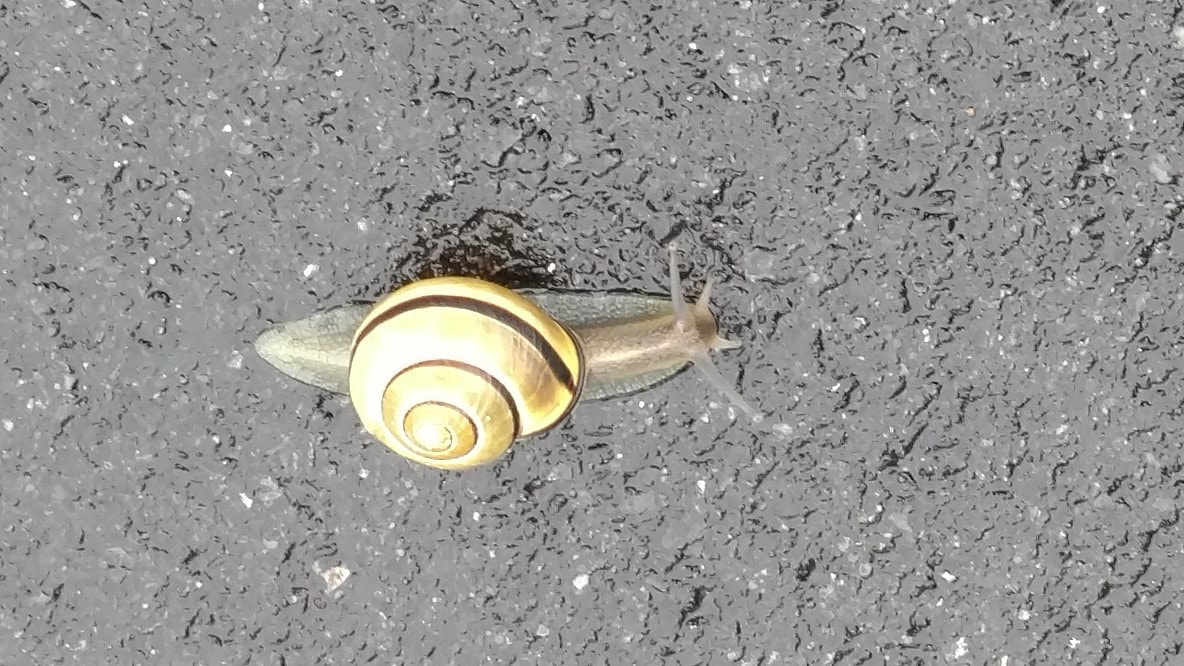

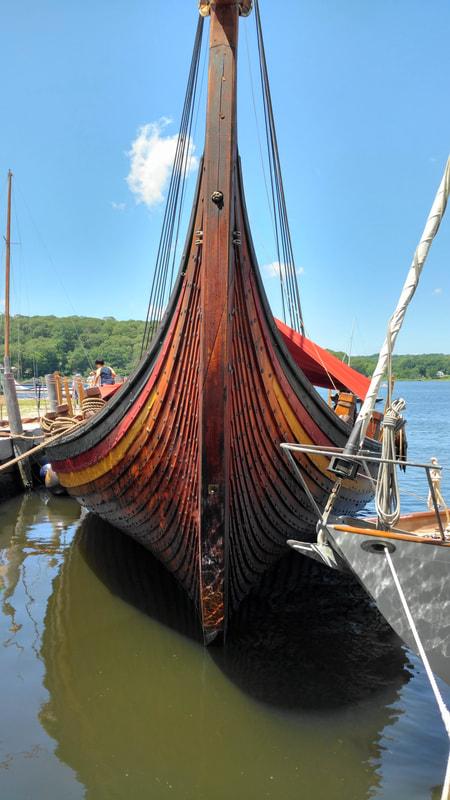
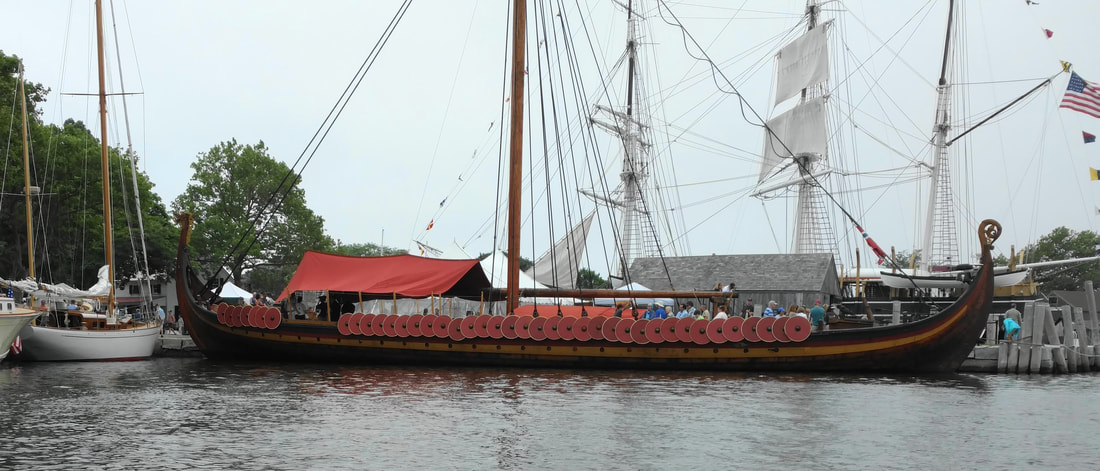
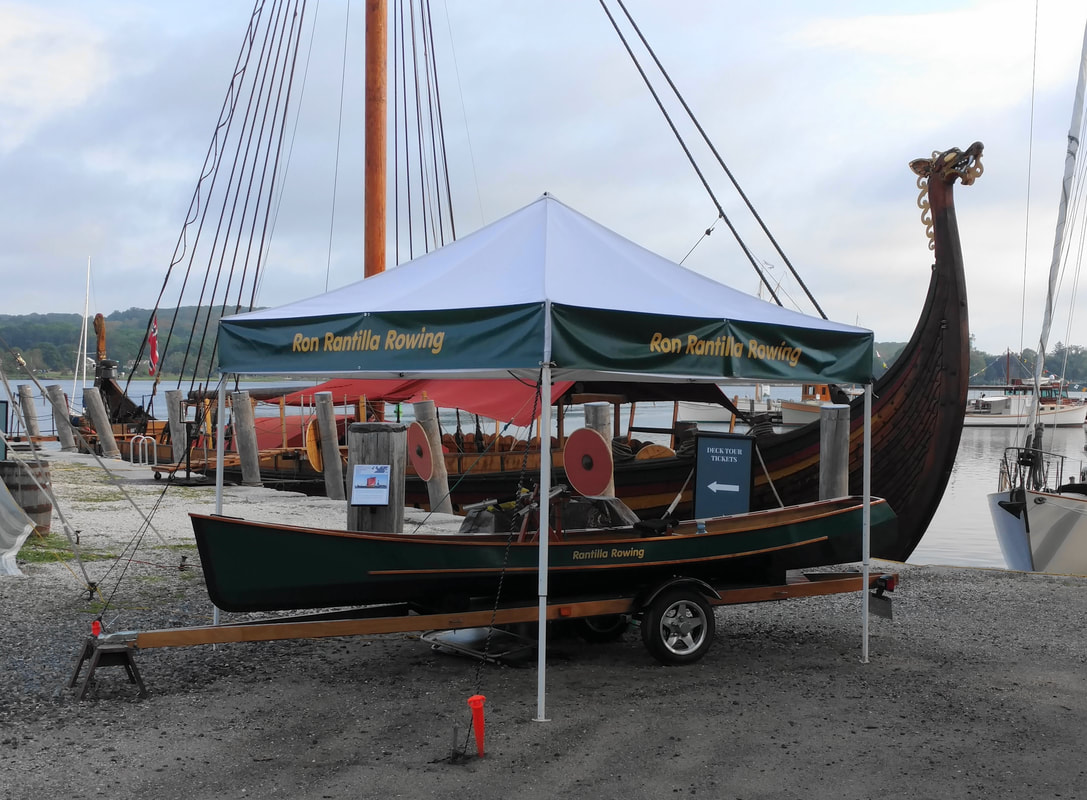
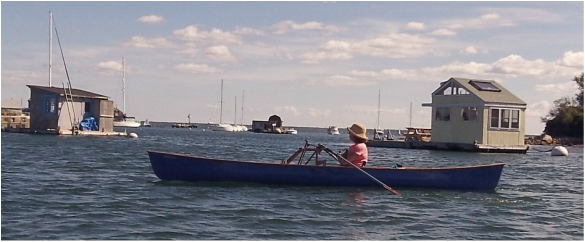
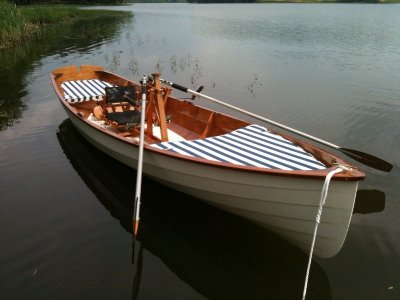
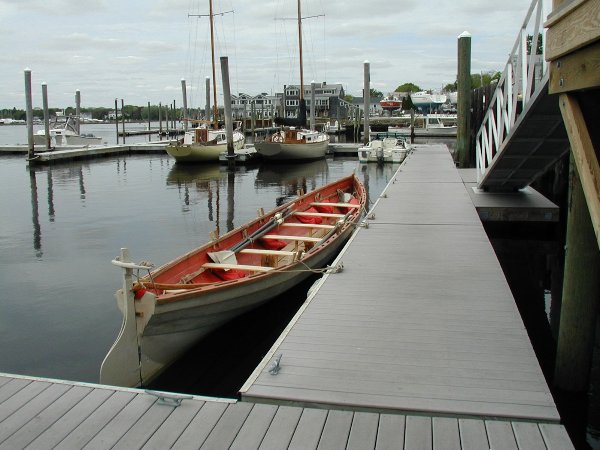
 RSS Feed
RSS Feed